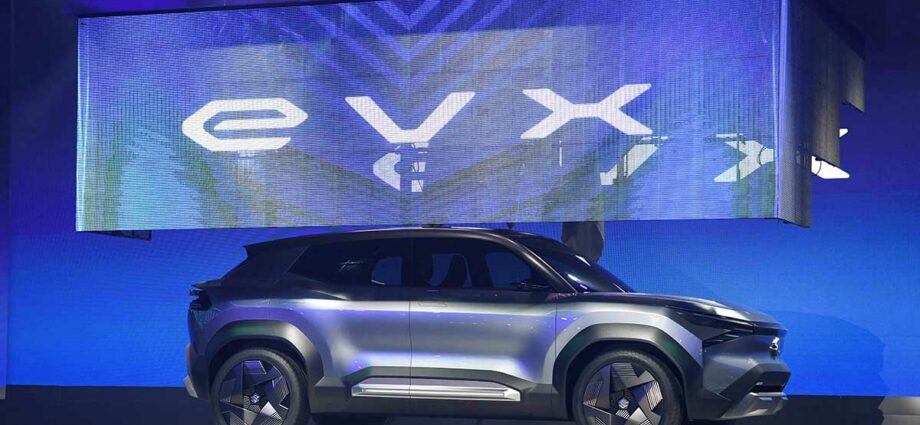‘We are going to have hybrid cars, which, as far as I know, none of our competition is working on, and this includes ethanol.’
Maruti Suzuki India Ltd’s (MSIL’s) board approved last week the issue of shares on a preferential basis to Suzuki Motor Corporation (SMC) for the acquisition of the Gujarat plant from its Japanese parent for a better grip of production, including that of electric vehicles (EVs).
R C Bhargava, chairman, MSIL, in an interaction with Surajeet Das Gupta/Business Standard in New Delhi, discusses the company’s EV plans, the need to acquire Suzuki Motor Gujarat (SMG), and reorganisation.
Following the move to acquire SMG, what does MSIL’s plan for EVs look like?
EV growth has been slow in India. What we are aiming for is that by 2030-2031 around 15 to 20 per cent of our total car sales comes from battery-powered electric vehicles.
Translated into numbers, it will be around 0.5 million. It’s not a small number, but we will try our best to reach it.
We expect the electric car market at that time to be 6 million-7 million in terms of domestic sales per annum.
We will have at least six models and will start from the premium end, maybe with a sports utility vehicle.
So are you conceding the number one position in electric cars to the competition?
Of course, because we are also going to have hybrid cars, which, as far as I know, none of our competition is working on, and this includes ethanol.
For instance, there is no country that has so much biogas potential (but India).
The target for hybrid cars is separate.
You have said that reaching a 4 million annual capacity (from 2.2 million now) will require reorganising the company substantially. Are you planning any move like spinning off the EV vertical into a separate company, as many have done?
To climb from 2.2 million to 4 million capacity in eight years is a huge exercise. But no, we won’t spin off the electric business; it has to be part of the production system.
We don’t want the electric team pushing only their products; we want the company to grow overall.
Clearly, some aspects of the company have to be centralised, and others decentralised. We have to work this out.
Why did you choose the preferential share route for acquiring SMG?
What we have done will lead to only 4 per cent dilution in equity and in return, we will achieve an increase in our production capacity by 800,000 vehicles per annum.
Just to explain, currently issued shares of MSIL are about 310 million. We will issue nearly 13 million shares, which is about 4 per cent dilution. Total shares will become 323 million.
Suzuki now has 175 million shares (56.4 per cent) and after the preferential issue, it will have 188 million shares or 58.2 per cent. So Suzuki’s holding will go up only by 1.8 percentage points.
Do you have any thoughts on restructuring the company?
No, but we have to see. Globally there are models like General Motors, which comprises a number of brands that sell as separate entities. Volkswagen has many subsidiaries as it bought various brands.
But product planning and technology development have to centralised, so does the personnel policy. But production units should be allowed as much autonomy as possible.
Following SMG’s amalgamation with MSIL, what will SMC in India do?
It will build a lithium-ion battery plant with an investment of Rs 7,300 crore (Rs 73 billion) and own 100 per cent of it. We will have huge demand and we will buy from it.
SMC will also undertake research and development in new technology areas and has already set up a company for it. It is also part of a JV with other Japanese companies and is already making batteries for hybrid cars.
It will, however, from now on not manufacture any vehicle for us.
After battling out with minority shareholders, MSIL signed a contract manufacturing agreement with SMC’s 100 per cent subsidiary — to buy cars.
At that time, MSIL said that it wanted to be like Apple — an asset-light company, concentrating on design, marketing, and sales. Why has this changed now?
Times have changed. At that time, we needed to substantially strengthen our sales and marketing team because in 2011-2012, we were not doing well and had fallen below 50 per cent market share.
Suzuki thought it would put in money, take responsibility for building a factory, and give us more confidence in spending money on marketing and sales.
We saved Rs 18,000 crore (Rs 180 billion). The money was in our cash reserves and earning interest.
We have earned in eight years over Rs 5,800 crore to Rs 6,000 crore (Rs 58 billion to Rs 60 billion) in interest, which is extra profit.
Then why change?
The situation has changed. We have a strong marketing team of 4,000 service and 3,000 sales outlets; plus, we have now embarked on increasing capacity to 4 million per annum.
Also, we have to coordinate production between five different technologies and will have to deal with 28 models, which we will have by 2031.
This task would require reorganisation of the company, and it would have been impossible if Suzuki continued to do one part of manufacturing, which is one-fourth of our total production.
So we realised it was a must to amalgamate and that strategic planning is done in one place.
Feature Presentation: Ashish Narsale/Rediff.com
Source: Read Full Article
-
United Airlines Offers 5% Pay Hike To Pilots Ahead Of Schedule
-
Netflix, Disney, Warner Bros Discovery, Amazon & Other Studios Dodge Abortion Safety Plan Appeal From Shonda Rhimes, Natasha Lyonne, Mindy Kaling, Ava DuVernay & Hundreds Of Female Showrunners & Scribes
-
These Countries Suffered the Most Civilian Casualties in World War II
-
Twitter Deal Closes, Elon Musk Comes In Swinging The Ax On Three Top Executives
-
Is It Dangerous to Work at Amazon?

